TickerTape
Weekly Global Stablecoin & CBDC Update
Digital Money Revolution: Stablecoins & CBDCs

This Week’s Stories
- DTCC Considers Stablecoin Launch
- Walmart and Amazon Explore USD Stablecoins
- JPM to Issue JPMD Stablecoin?
- Ubyx Raises $10M to Build Stablecoin Clearing Network
- Malaysia Unveils FinTech Regulatory Sandbox
- Bank of Canada: rCBDC Feasibility Study
- Senate Approves GENIUS Act
- Coinbase Launches Coinbase Payments
- China Pushes Digital RMB
- South Korea Considers Stablecoin Legislation
- Coinbase Partners with Clearing House
- StraitsX Unveils Fiat-Stablecoin Settlement Rails
- Visa Partners with Yellow Card
The Depository Trust and Clearing Corporation (DTCC), which handles the vast majority of U.S. stock trades, is exploring the launch of a U.S. dollar-backed stablecoin to enhance the speed, efficiency, and transparency of financial market transactions.
While the project is still in early stages, its implementation depends on pending U.S. legislative approval, as regulatory clarity is key. DTCC aims to leverage blockchain technology to reduce settlement times from days to seconds, cut costs, and support tokenized collateral across global financial markets.
The initiative aligns with DTCC’s broader blockchain strategy, including the tokenized collateral management platform it unveiled earlier this year. Industry observers suggest that a DTCC-issued stablecoin could become a critical driver in the institutional adoption of digital finance.
Key Takeaways:
- Settlement Efficiency: DTCC is considering using a stablecoin to enable near-instantaneous settlement of traditional asset trades, replacing the current multi-day settlement system.
- Legislative Dependency: Any stablecoin launch will hinge on new federal legislation that legitimizes stablecoins for use in financial markets.
- Tokenized Collateral Integration: DTCC’s recent launch of a blockchain-based tokenized collateral platform showcases its growing commitment to digitizing financial infrastructure.
- Blockchain Interoperability: Patent filings and community speculation suggest DTCC’s systems may integrate with public ledgers like XRP Ledger and Stellar.
- Institutional Impact: As a central clearing body for trillions in annual transactions, DTCC’s entrance into stablecoins could dramatically accelerate institutional blockchain adoption.
- Regulatory Challenges: The lack of a clear U.S. stablecoin framework presents a significant barrier, as the DTCC cannot afford to operate without legal certainty.
- Strategic Infrastructure Shift: By positioning stablecoins as tools for real-time settlement and collateral mobility, DTCC is reshaping how financial institutions think about liquidity and risk management.
Why It Matters:
- Major Institutional Shift: DTCC is one of the most critical infrastructure players in U.S. finance, its move into stablecoins could legitimize blockchain across traditional finance.
- Regulatory Pressure: A potential DTCC stablecoin raises the stakes for lawmakers to pass clear legislation, accelerating regulatory clarity for the entire industry.
- Market Ripple Effect: If DTCC adopts stablecoins, other financial institutions may feel compelled to follow, fast-tracking widespread adoption.
- Operational Efficiency: Real-time settlement could significantly reduce risk, settlement delays, and associated costs for global asset trading.
- Digital Liquidity Evolution: Stablecoins could become a new standard for collateral and liquidity management, shifting how institutions manage capital.
- Bridging Legacy and Blockchain: The project represents a tangible bridge between traditional financial systems and emerging decentralized technologies.
Retail behemoths Walmart and Amazon are reportedly evaluating the issuance of proprietary US dollar-backed stablecoins to enhance payment efficiency and reduce costs across their vast e-commerce operations. Though neither company has confirmed, sources told The Wall Street Journal that early-stage plans are in motion.
The potential rollout comes amid a surge in institutional stablecoin adoption and could significantly alter payment infrastructure by bypassing traditional banking rails. These efforts may depend heavily on the legislative success of the GENIUS Act, which would establish clear guidelines for stablecoin reserves, AML compliance, and issuer obligations.
If launched, stablecoin rails for Amazon (with $447B in global e-commerce revenue) and Walmart (over $100B online in 2023) could save billions in transaction fees while enabling faster settlement and better cross-border utility.
Key Takeaways:
- Brand-Specific Coins: Walmart and Amazon are considering issuing their own retail-focused stablecoins, though official confirmation is pending.
- Massive Revenue Potential: Amazon and Walmart together represent over $500B in annual e-commerce sales, giving any stablecoin a massive transaction base.
- Cost Efficiency: Stablecoins could significantly reduce banking and transaction fees, which represent a major cost area for high-volume retailers.
- GENIUS Act Connection: The move is likely contingent on the Guiding and Establishing National Innovation for US Stablecoins (GENIUS) Act, now advancing in the Senate. The bill defines rules for collateral, audits, and compliance.
- Precedent Set by Shopify: Shopify recently announced USDC integration, making stablecoins opt-out for merchants by year-end, signaling rising commercial acceptance.
- Ripple Effect: Other firms, like JPMorgan, Citigroup, and Bank of America, are also reportedly exploring joint stablecoin launches, and DTCC sees them as ideal for real-time collateral operations.
Why It Matters:
- Mainstream Adoption Signal: Entry of Walmart and Amazon could normalize stablecoin use for hundreds of millions of consumers globally.
- Payment Innovation at Scale: Stablecoins could reshape how everyday retail transactions are conducted, accelerating retail-fintech convergence.
- Cross-Border Advantage: Retail-issued stablecoins could simplify and speed up international e-commerce transactions for both buyers and sellers.
- Competitive Pressure: Their move may push other retail and tech giants (like Apple, Google, and Meta) to develop their own digital currencies.
- Banking Disruption: Bypassing traditional banking rails could lead to a realignment of how payment services are delivered and monetized.
- Policy Influence: A successful stablecoin rollout by these giants could pressure lawmakers to fast-track clear and innovation-friendly legislation.
JPMorgan Chase has filed a trademark application for “JPMD,” sparking speculation that the banking giant may be preparing to launch a stablecoin. The trademark covers services related to digital asset trading and payments. While the bank has not confirmed these intentions, social media users and crypto watchers believe “JPMD” could signal a new U.S. dollar-backed stablecoin offering. The filing follows reports of joint stablecoin discussions among major U.S. banks and reflects JPMorgan’s evolving stance on crypto, as regulatory clarity improves.
Key Takeaways:
- Trademark Filing: JPMorgan Chase filed for the trademark “JPMD” covering services involving digital asset trading, payments, and blockchain.
- Stablecoin Speculation: The filing has led to speculation that “JPMD” is a forthcoming stablecoin product, though the bank has not confirmed this.
- Historical Context: JPMorgan already operates JPM Coin for wholesale payments, handling over $1B in daily transactions as of 2023.
- Industry Momentum: The filing aligns with broader moves by banks like Bank of America, Citigroup, and Wells Fargo to explore stablecoin issuance.
- Big Tech Joins In: Meta, Apple, Airbnb, X, and Google are also investigating stablecoin integration into their platforms.
- Regulatory Shift: Jamie Dimon, once a fierce crypto critic, has softened his stance amid improved U.S. regulatory sentiment and market trends.
Why It Matters:
- Institutional Legitimacy: A JPMorgan stablecoin would validate stablecoins within traditional finance, influencing peer institutions to follow.
- Cross-Border Payments: It could support faster, more cost-effective cross-border transactions at scale.
- Regulatory Signal: Signals growing institutional confidence amid a maturing U.S. regulatory environment.
- Brand Credibility: A stablecoin from the U.S.’s largest bank could boost mainstream adoption and reduce stigma around digital assets.
- Competitive Pressure: May accelerate stablecoin development by rival banks and fintechs looking to keep pace.
Ubyx Inc., a startup led by 30-year payments veteran Tony McLaughlin, announced a $10 million seed round to build the first global stablecoin clearing system. Led by Galaxy Ventures with participation from Coinbase Ventures, Founders Fund, VanEck, Paxos, and others, Ubyx aims to solve market fragmentation by enabling stablecoin redemption at par into existing bank and fintech accounts. With support from a wide network of issuers and infrastructure partners, Ubyx is laying the groundwork for a Visa-like global acceptance layer for regulated stablecoins across multiple public blockchains.
Key Takeaways:
- $10M Seed Round: Ubyx raised funding from top crypto and fintech investors including Galaxy Ventures, Coinbase Ventures, Founders Fund, Paxos, and VanEck.
- Founder with Deep TradFi Roots: Tony McLaughlin, a longtime Citigroup exec, leads Ubyx with a vision to unite TradFi and digital assets through a universal stablecoin network.
- Stablecoin Clearing at Par: Ubyx connects issuers with banks and fintechs, enabling fiat redemptions of stablecoins at face value to facilitate cash-equivalent accounting treatment.
- Mutual Redemption Network: Participating issuers—like Paxos, Ripple, Monerium, AllUnity, and GMO Trust—gain access to a shared infrastructure with a common compliance and redemption rulebook.
- Multi-Chain Support: Ubyx will operate across numerous blockchains including Aptos, Arbitrum, Base, Solana, XRP Ledger, ZKsync, and more.
- Launch Set for Q4 2025: Live operation will begin late this year, with expansion into new currencies and progressive decentralization to follow.
Why It Matters:
- Fixes Stablecoin Fragmentation: Each issuer no longer needs to build its own acceptance network—Ubyx creates a unifying layer that mimics how Visa scaled cards globally.
- Enables TradFi Adoption of Public Chains: By facilitating KYC, AML, and compliance checks, Ubyx helps regulated institutions onboard to public blockchain infrastructure.
- Supports “Singleness of Money”: Redemptions at par and standardized compliance make stablecoins more likely to achieve cash-equivalent status on balance sheets.
- Institutional Endorsement of Crypto Rails: Participation from Payoneer, Monerium, BitGo, Chainalysis, and Fireblocks underscores growing institutional confidence in tokenized payment rails.
- Building a Stablecoin Economy: Ubyx could become foundational to Web3 commerce, embedded payments, and cross-border financial services in the coming regulatory era.
Malaysia’s Prime Minister Anwar Ibrahim has announced the Digital Asset Innovation Hub, a regulatory sandbox aimed at accelerating fintech experimentation in digital assets. The initiative, revealed during a national digital strategy address, targets programmable payments, ringgit-backed stablecoins, and tokenized supply chain financing. While not explicitly confirmed, the sandbox is expected to be managed by Bank Negara Malaysia (BNM), the central bank, based on payment-centric use cases and remarks by Governor Abdul Rasheed Ghaffour. The move reflects Malaysia’s commitment to advancing its digital currency strategy through both public and private sector alignment.
Key Takeaways:
- New Sandbox for Fintechs: Malaysia’s Digital Asset Innovation Hub will enable both local and international players to trial stablecoins, programmable finance, and tokenized products in a regulated environment.
- Central Bank Support Likely: Though unconfirmed, Bank Negara Malaysia is expected to host the sandbox, given its role in payment infrastructure and its governor’s endorsement of digital asset modernization.
- Ringgit-Backed Stablecoins in Focus: One of the sandbox’s key use cases includes exploring regulated ringgit-pegged stablecoins for domestic and cross-border transactions.
- Digital Currency Shift: Malaysia recently pivoted away from retail CBDC trials, focusing instead on wholesale solutions and interoperability across central banks.
- Asset Tokenization on the Horizon: The central bank’s stance aligns with the Securities Commission’s push to regulate tokenized capital market products—another pillar in Malaysia’s digital finance vision.
- Cross-Border Collaboration Continues: Malaysia remains involved in projects like Singapore’s Project Dunbar and China’s mBridge, reflecting its regional leadership in wholesale CBDC development.
Why It Matters:
- Stablecoin Legitimacy: Malaysia’s initiative adds regulatory weight to the emerging narrative that regulated stablecoins can complement, not compete with, central bank digital currencies.
- Regional Fintech Hub Aspirations: By launching a sandbox open to global innovators, Malaysia positions itself as a forward-thinking destination for Web3 and digital finance development in Southeast Asia.
- Public-Private Alignment: The government’s strategy reflects a rare level of synchronization across infrastructure, regulation, and talent—a model other developing markets may emulate.
- Programmable Finance Maturity: With programmable payments included in the sandbox scope, Malaysia is entering the next phase of financial infrastructure transformation.
- Tokenization Frameworks Emerging: The reference to capital markets tokenization signals that Malaysia is not just thinking payments, but full-spectrum financial digitization.
The Bank of Canada has published a major feasibility study proposing a scalable and privacy-focused design for a retail CBDC. Titled “A Retail CBDC Design for Basic Payments: Feasibility Study”, the paper evaluates OpenCBDC 2PC, a research system co-developed with MIT, as a top candidate for implementing digital cash suited to everyday use. The study concludes that the design can deliver fast, low-cost payments while preserving user privacy, though integration with current payment systems and core system resilience will require further development. With throughput surpassing 250,000 transactions per second, the proposal signals a potential “iPhone moment” for public-sector digital currencies.
Key Takeaways:
- OpenCBDC 2PC Architecture: A two-phase commit system using UTXO-based funds, allowing strong privacy, decentralization, and auditable monetary supply without compromising speed.
- Two-Tier Deployment: Combines central bank settlement with intermediary-facing services like wallet custody and compliance, offering the best of both control and scalability.
- High-Speed Performance: Baseline system handles over 250,000 TPS; even privacy-preserving variants show strong potential with optimization.
- Privacy by Design: Users can hold their own wallets and keys, maintaining cash-like privacy and resisting transaction surveillance.
- Auditability & Security: Supports real-time audits and multiple wallet types, plus mechanisms for sentinel attestation and resilience planning.
- Remaining Challenges: Key open questions include integrating with legacy retail systems, achieving privacy-preserving audit scalability, and ensuring system-wide recovery after outages.
Why It Matters:
- Canada’s Global Influence: This blueprint could inform other central banks evaluating CBDC rollouts, especially those focused on privacy and democratic accountability.
- Digital Payments Without Surveillance: OpenCBDC 2PC shows how digital currency can empower users without becoming a tool of centralized monitoring.
- Proof That CBDCs Can Scale: The study demonstrates that a national digital currency can meet the transaction volumes of real-world retail ecosystems.
- Bridges the Cash-Digital Divide: With its wallet-based design and non-repudiation features, OpenCBDC is a step toward reintroducing cash-like freedom in a digital age.
- Tech-Led Public Innovation: In partnering with MIT, the Bank of Canada has shown how international collaboration can yield breakthrough financial infrastructure.
The U.S. Senate passed the long-anticipated GENIUS Act, marking the first time Congress has approved comprehensive cryptocurrency legislation. The 68-30 bipartisan vote reflects a dramatic shift in Washington’s stance toward digital assets, transforming stablecoins from speculative instruments to legitimate financial tools. The bill creates a federal regulatory framework that legitimizes stablecoins and opens the door for further integration of blockchain into traditional finance. While concerns remain, especially among Democrats over regulatory gaps and potential conflicts of interest, the crypto industry hailed the bill as a game-changing milestone.
Key Takeaways:
- GENIUS Act Clears Senate: The bill is the first major crypto legislation passed by the Senate, offering a regulatory framework for stablecoins like USDC.
- Bipartisan Crypto Pivot: Backed by 68 senators, including 18 Democrats, the bill signals growing bipartisan support for integrating digital assets into the U.S. economy.
- Wall Street Cheers: Circle, issuer of USDC, surged 170% after going public earlier this month, bolstered by legislative momentum.
- Political Realignment: Trump-era policies have reversed Biden administration crackdowns, enabling rapid industry growth and political acceptance.
- Big Money Lobbying Pays Off: Crypto super PACs spent $130M influencing Congress—53 of 58 supported candidates won, paving the way for the bill’s success.
- Consumer Protections in Focus: Despite critiques, the bill includes FDIC oversight provisions and other consumer safeguards to boost stablecoin trust.
- Democratic Dissent: Senators Warren and Schumer remain skeptical, warning of thin regulation and calling for stronger anti-corruption guardrails.
- Notable Omissions: Efforts to ban public officials from profiting off stablecoin ventures were blocked, raising ethical concerns over the Trump family’s involvement.
Why It Matters:
- U.S. Digital Dollar Leadership: Federal regulation could cement the dollar’s dominance in the digital asset world amid competition from China’s e-CNY.
- Institutional Greenlight: Legitimacy may lure traditional financial institutions into the stablecoin space.
- Innovation Surge Ahead: Clear rules reduce risk and may unleash a wave of developer and enterprise adoption.
- Web3 Momentum: This could be the inflection point where decentralized finance begins to merge with legacy financial infrastructure.
- Regulatory Blueprint: The GENIUS Act may serve as a global model, influencing stablecoin policy across the EU and Asia.
- Investor Confidence Rising: With rules in place, stablecoins are more likely to be seen as infrastructure—not just investment vehicles.
Coinbase launches Coinbase Payments, a stablecoin-based global payment solution designed to help merchants accept USDC transactions easily, without needing blockchain expertise. Built on Base, Coinbase’s Ethereum Layer-2 network, the service integrates directly with Shopify and other ecommerce platforms, offering 24/7 payment capabilities. The modular system includes Stablecoin Checkout, an Ecommerce Engine, and a smart contract-based Payments Protocol. The launch reflects Coinbase’s growing ambition to compete in the global payments space and coincides with rising interest in blockchain-enabled transactions by traditional fintech players like PayPal and Stripe.
The move sparked a 16% jump in Coinbase’s stock and a 25% rally in Circle, the issuer of USDC, as investors responded to the potential of a low-cost, always-on, and scalable alternative to legacy payment systems. Coinbase claims that stablecoins facilitated $30 trillion in payments last year, tripling from the year before, suggesting massive demand for programmable financial infrastructure.
Key Takeaways:
- No Blockchain Experience Needed: Merchants can now accept USDC payments without managing wallets, keys, or blockchain transactions directly.
- Always-On Payments: Built on Base (Coinbase’s Layer-2), the system supports 24/7 settlement globally.
- Three-Part Modular Stack:
- Stablecoin Checkout: Gasless payments using wallets like MetaMask or Coinbase Wallet in a browser-native interface.
- Ecommerce Engine: APIs for refunds, authorization, and ledgers.
- Commerce Payments Protocol: Smart contracts enable features like delayed capture and onchain escrow.
- Shopify Integration: Already live, expanding reach immediately to global ecommerce merchants.
- Massive Market Opportunity: Stablecoins enabled $30 trillion in transactions last year, with the sector experiencing rapid growth.
- Stock Surge: Coinbase shares rose 16%; Circle, the USDC issuer, jumped 25% after the announcement.
Why It Matters:
- Stablecoins Go Mainstream: Coinbase’s stack pushes USDC into the hands of everyday merchants and consumers.
- Competing With Fintech Giants: By replicating traditional rails with onchain tools, Coinbase enters the race with PayPal, Stripe, and others.
- Simplifying Crypto Adoption: The “no crypto knowledge needed” model lowers barriers to entry for merchants.
- Programmable Payments: With smart contracts behind the scenes, businesses can automate logic like recurring billing and refunds.
- Boosts Confidence in USDC: As adoption scales, so does trust in USDC’s real-world utility, and its ecosystem leader, Circle.
The People’s Bank of China (PBoC) has established an international operations center for the digital RMB in Shanghai, signaling an expansion of its CBDC ambitions beyond domestic borders. In a speech by PBoC Governor Pan Gongsheng, the central bank also called for global currency reform, sharply criticizing the dominance and geopolitical use of the U.S. dollar without naming it directly. The governor emphasized that when a dominant currency is used for national interests, it undermines its role as a global public good, raising concerns about potential international financial instability.
Pan advocated for the diversification of global currencies, referencing the IMF’s Special Drawing Rights (SDRs) and highlighting the need to evolve cross-border payment systems through blockchain and digital currency innovations. Although he referenced mBridge, China’s cross-border CBDC platform, details on its operation, especially with geopolitically sensitive countries, were not explicitly addressed. He also flagged stablecoins as a supervision risk, while commending Hong Kong’s recent legislation as a sandbox environment for observation.
Key Takeaways:
- Digital RMB Goes Global: A new international center for China’s digital currency has been established in Shanghai, underscoring plans for global expansion.
- Criticism of U.S. Dollar Dominance: The PBoC warned against the weaponization of major currencies, calling for a more balanced international system.
- Push for Currency Diversification: China reiterated the call for broader use of IMF SDRs and less reliance on any single national currency.
- Cross-Border Blockchain Tech: Blockchain, smart contracts, and decentralized finance (DeFi) are expected to drive the next generation of global payment systems.
- Cautious on Stablecoins: While acknowledging blockchain’s benefits, China highlighted the regulatory risks of stablecoin systems.
- Hong Kong as a Testing Ground: With recent stablecoin legislation, Hong Kong appears to serve as an experimental zone for fintech regulation relevant to the mainland.
Why It Matters:
- Global Strategy Shift: The internationalization of the digital RMB reflects China’s growing effort to challenge U.S. dollar dominance in trade and finance.
- Geopolitical Undercurrents: Currency reform calls are part of a broader narrative challenging U.S. influence in global monetary systems.
- Tech-Driven Payment Reform: Emphasis on smart contracts and DeFi indicates China’s commitment to leading fintech-driven innovation in cross-border payments.
- Shadow of Sanctions: Although not explicitly stated, the timing and rhetoric suggest a potential workaround for sanctions through digital infrastructure.
- China-Hong Kong Alignment: Hong Kong’s legislative moves are becoming an unofficial staging ground for policy experimentation relevant to mainland digital currency strategies.
South Korea is carefully evaluating the launch of a Won-backed stablecoin, as the government advances a new Digital Asset Basic Act and the Bank of Korea (BOK) urges prudence. BOK Governor Rhee Chang-yong stressed that any move toward a stablecoin or CBDC must prioritize financial stability over short-term economic boosts. While open to innovation, he warned against broad fiscal measures like blanket cash aid, arguing that such tools can disrupt economic signals and increase long-term risk.
The proposed legislation, backed by the ruling Democratic Party, would allow local firms to issue Won-based stablecoins, aiming to reduce reliance on USD-pegged stablecoins like USDT and USDC, which currently dominate the South Korean crypto market. The central bank has also highlighted concerns around systemic risks posed by private stablecoins, especially as the country experiences inflationary pressure in the housing sector.
Despite a conservative stance, South Korea remains a major crypto hub and is actively supporting digital innovation. The country is participating in cross-border CBDC pilots with the BIS, and its Ministry of Science is backing blockchain-related projects.
Key Takeaways:
- Cautious Support: BOK Governor supports stablecoin development, but warns it must align with broader financial stability goals, not short-term stimulus.
- Digital Asset Basic Act: New legislation aims to authorize Won-based stablecoins, reducing reliance on dollar-pegged alternatives.
- Risk of Systemic Impact: BOK is watching for private stablecoins that could pose macroeconomic or monetary policy risks.
- Crypto but Controlled: South Korea is a crypto-heavy country, but enforces strict regulatory oversight to control fraud, volatility, and capital flight.
- Cross-Border Ambitions: BOK is participating in CBDC experiments with BIS and regional partners.
- Government Tech Push: South Korea’s Ministry of Science is increasing support for blockchain innovation, showing institutional alignment.
Why It Matters:
- Sovereign Digital Finance: A Won-backed stablecoin would enhance domestic monetary sovereignty and offer an alternative to USDC/USDT.
- Legislative Momentum: The Digital Asset Basic Act could pave the way for a regulated digital currency ecosystem in South Korea.
- Balancing Act: The BOK’s position reflects the global tension between innovation and stability in financial systems.
- Regional Influence: As a major crypto trading hub, South Korea’s approach could shape Asia-Pacific CBDC and stablecoin strategies.
- Sign of the Times: Governments are no longer asking if digital currencies will emerge, but how to control and design them responsibly.
Coinbase Global Inc. has partnered with clearing house Nodal Clear to make USDC, the world’s second-largest stablecoin, the first regulated stablecoin used as collateral in US futures trading. This collaboration is part of Coinbase’s broader push to expand its derivatives business and payment services. The company is enabling ecommerce platforms, including Shopify, to integrate USDC payments, further cementing the stablecoin’s role in traditional financial systems.
These developments follow the US Senate’s passage of a bill to regulate stablecoins, which could drive institutional adoption and broader acceptance of stablecoins like USDC in traditional finance. Stablecoins are also gaining popularity in DeFi applications for borrowing and lending. Coinbase’s derivatives business has grown steadily since its acquisition of FairX in 2022, and the company has regulatory approval to sell cryptocurrency derivatives to retail investors in the US.
Key Takeaways:
- Coinbase and Nodal Clear are enabling the first regulated use of USDC as collateral in US futures trading.
- Coinbase is expanding payment services, allowing platforms like Shopify to integrate USDC payments.
- US Senate’s stablecoin regulation bill could enhance institutional acceptance of stablecoins.
- Stablecoins like USDC are increasingly utilized in DeFi for borrowing and lending.
- Coinbase’s derivatives business has grown significantly since acquiring FairX in 2022 and gaining regulatory approval in 2023.
- Coinbase’s stock rose by 17% following the announcements.
Why It Matters:
- Institutional Adoption: Using USDC as regulated collateral could pave the way for stablecoins to be widely accepted in traditional capital markets, bridging the gap between blockchain-based assets and conventional finance.
- Ecommerce Integration: By enabling platforms like Shopify to integrate USDC payments, Coinbase is driving the adoption of stablecoins in everyday transactions.
- Regulatory Milestone: The partnership highlights the growing role of regulation in legitimizing digital assets and fostering trust among investors and institutions.
- Innovation in DeFi: Stablecoins like USDC are not only becoming mainstream in payments but are also expanding their role in decentralized finance, offering new opportunities for borrowing, lending, and trading.
- Market Impact: The announcements demonstrate Coinbase’s leadership in the digital asset space, reflected in its stock price surge and growing influence in regulated financial markets.
StraitsX has launched DVA/+ (Dedicated Virtual Accounts Plus), a next-generation infrastructure designed to bridge traditional finance and digital assets. This solution provides crypto-native institutions like exchanges, wallets, and fintech platforms, with named USD or SGD virtual accounts that are fully compliant and programmable. These accounts support COBO (Collect on Behalf Of) and POBO (Pay on Behalf Of) functionalities, enabling seamless fiat-stablecoin settlements using StraitsX’s USD-pegged stablecoin, XUSD.
DVA/+ is built for real-time fund visibility, automated treasury workflows, and API-first integration, offering institutions a scalable and compliant way to move value across borders and networks without needing to build their own banking infrastructure.
Key Takeaways:
- DVA/+ enables programmable, compliant fiat rails for crypto-native institutions.
- Named virtual accounts offer transparency, reconciliation ease, and regulatory clarity.
- Integrated with XUSD, allowing fast, trusted fiat-stablecoin conversions.
- Supports COBO/POBO, enhancing global payment capabilities.
- API-first design allows seamless backend integration for institutions.
- Marks StraitsX’s evolution from a stablecoin issuer to a full-stack digital finance infrastructure provider.
Why it Matters:
- Bridges TradFi and DeFi: DVA/+ helps institutional players connect traditional banking systems with blockchain-based assets.
- Regulatory Alignment: As global regulators tighten scrutiny, compliant infrastructure like DVA/+ becomes essential.
- Boosts Stablecoin Utility: Enhances the real-world usability of stablecoins like XUSD in institutional finance.
- Infrastructure Shift: Signals a broader trend of stablecoin issuers evolving into infrastructure providers, shaping the future of regulated digital finance.
Visa has expanded its stablecoin settlement capabilities across the Central and Eastern Europe, Middle East, and Africa (CEMEA) region. This move includes a strategic partnership with Yellow Card, a pan-African fintech focused on stablecoin infrastructure. The initiative allows select issuers and acquirers to settle US dollar transactions using USDC on blockchain rails, enabling 24/7/365 settlement, reducing costs, and improving liquidity management.
Visa has already processed over $225 million in stablecoin volume since its pilot began in 2023. Initially, clients like Crypto.com had to convert USDC to fiat to settle with Visa, but now they can settle directly in USDC. The partnership with Yellow Card aims to explore stablecoin use cases in African markets, focusing on treasury operations and liquidity enhancement.
This expansion builds on Visa’s broader digital currency strategy, including its Visa Tokenized Asset Platform (VTAP) and investments in B2B stablecoin firms like BVNK.
Key Takeaways
- Visa is scaling stablecoin settlement across emerging markets in CEMEA.
- Partnership with Yellow Card targets African markets for stablecoin-based treasury and payment solutions.
- Direct USDC settlement eliminates the need for fiat conversion, streamlining operations.
- Visa has already processed $225M+ in stablecoin volume, showing real-world traction.
- Builds on Visa’s broader digital asset strategy, including VTAP and investments in stablecoin infrastructure.
Why it Matters
- Demonstrates mainstream adoption of stablecoins by a major global payments network.
- Empowers emerging markets with faster, cheaper, and more transparent cross-border payments.
- Signals a shift in financial infrastructure: Blockchain-based settlement is becoming viable for traditional institutions.
- Highlights Africa’s fintech potential: Visa’s collaboration with Yellow Card shows growing interest in the continent’s digital finance ecosystem.





